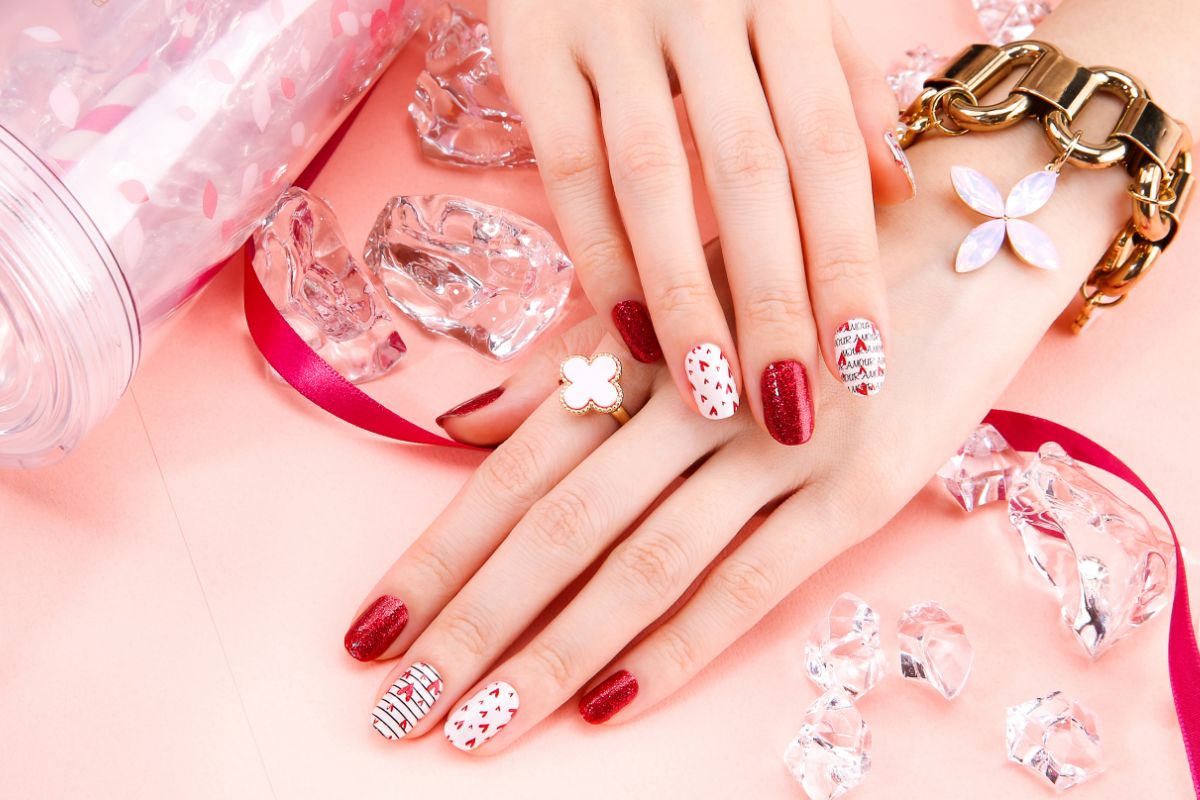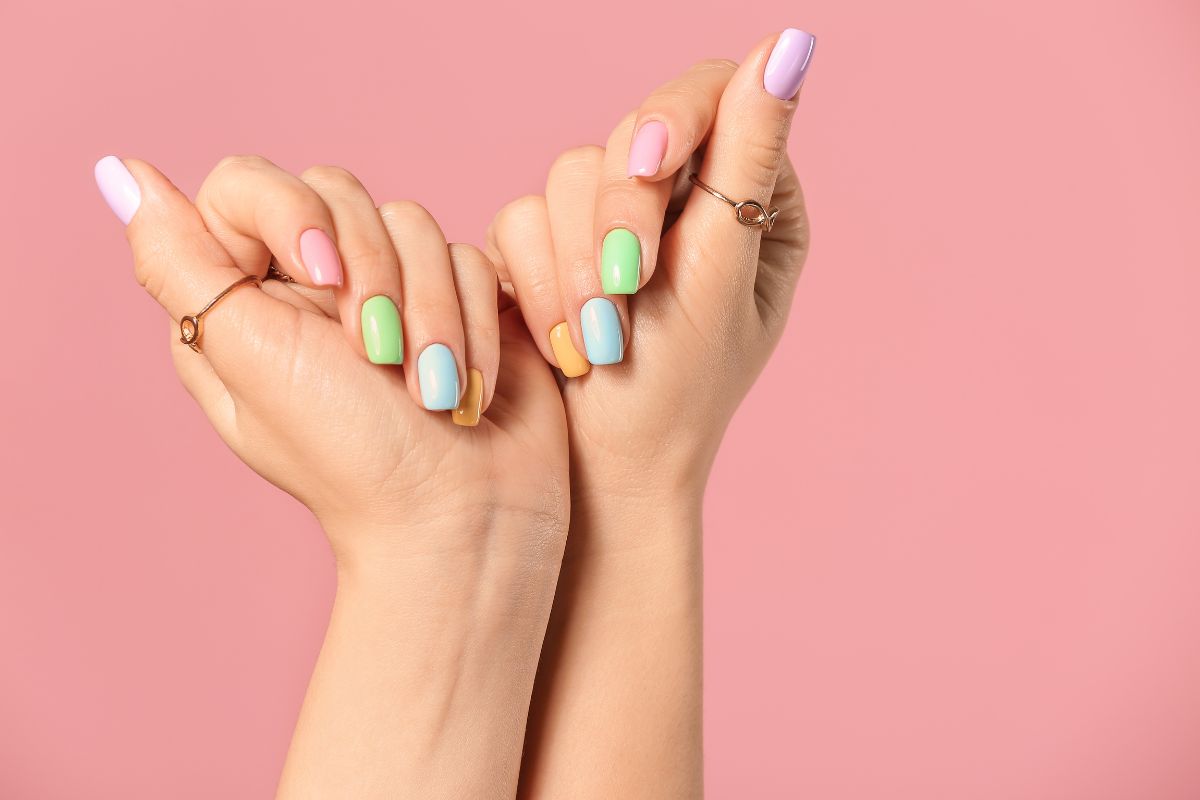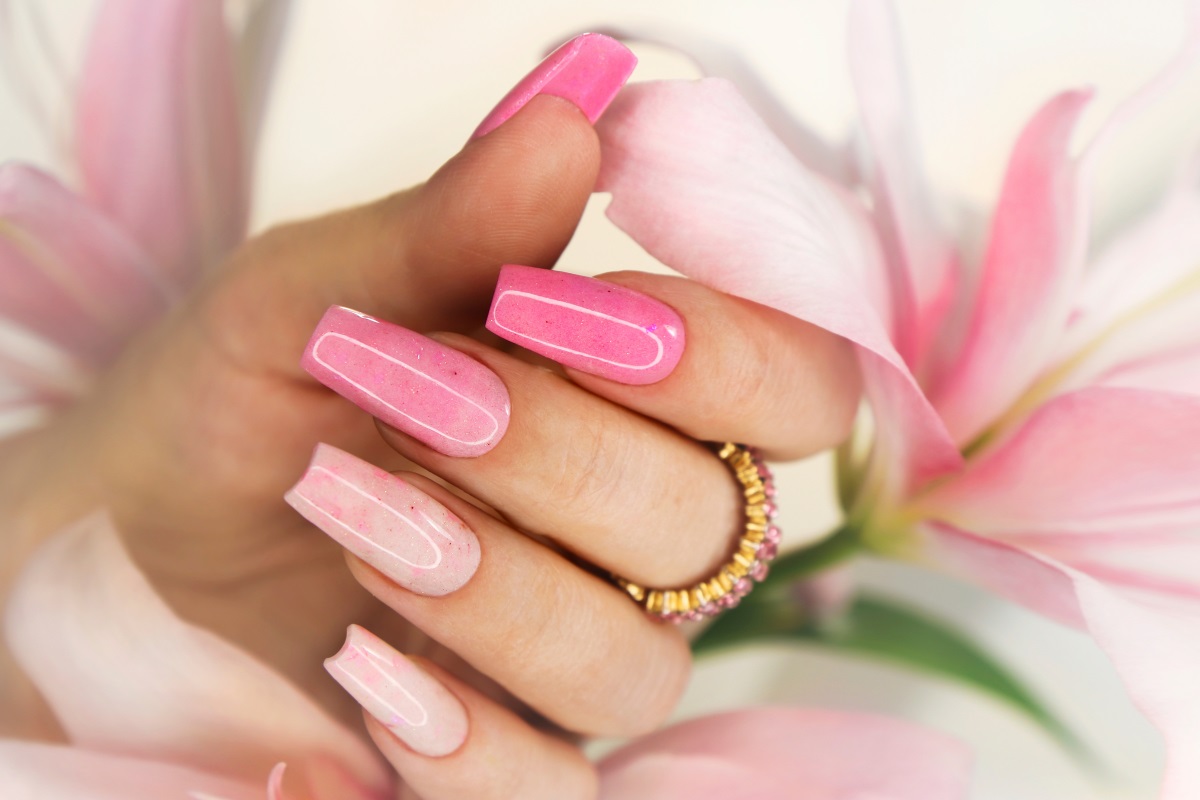Why Do My Acrylic Nails Hurt? Top Causes and Solutions
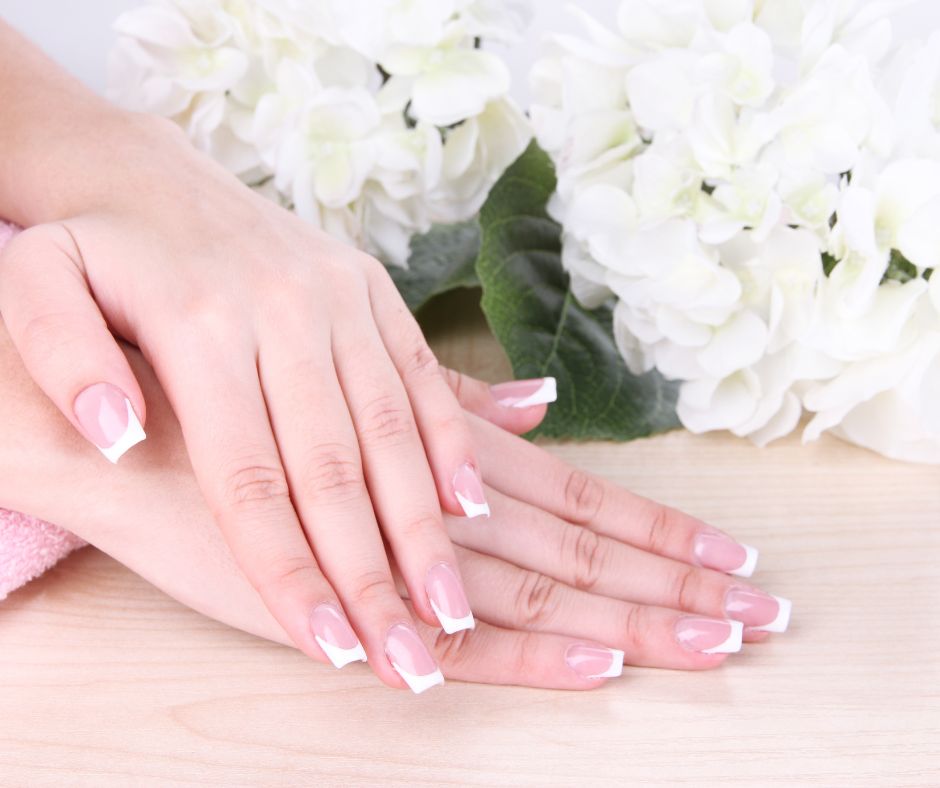
Published October 17, 2023
Many ladies love a good manicure. Seeing your hand in a beautifully shaped and painted manner just seems to hit the spot. It can easily make our day. It makes us feel pretty, groomed, and confident.
And in the world of manicures, acrylic nails are beloved and famed. Acrylic nails are a popular beauty trend for their long-lasting durability. It will last you a few weeks without scratches, cuts, chips, or whatever. Yet, somehow, pain can occur after their application.
There’s a saying: there’s no beauty without pain. But does it really have to be this way? Acrylic nails should not hurt, yet there’s a slight chance they can. Continue reading as we’ll solve the answer to “Why do my acrylic nails hurt?”. We’ll also cover ways to relieve it and how to prevent them from hurting. Finally, we’ll discuss top advice for keeping healthy nails. Let’s get started.
What Are Acrylic Nails?
Acrylic nails are a blend of powder and liquid monomers. The mixture is turned into a blob of dough, molded onto your nails with a brush, and then air-dried. Acrylics do not need a lamp to cure. They are great for changing the shape or extending your nails.
They are also the prettiest accessory for short nail beds. They come in various colors that look amazing on any skin complexion. Acrylics will also stay chip-free for weeks.
Benefits of Acrylic Nails
- Acrylic nails can last for weeks. They are very durable. They do not chip and break. They are also less likely to damage your natural nails, which is crucial for maintaining healthy nails.
- Acrylic nails can give you the aura of having long, gorgeous nails. Acrylic nails are crafted from a harder material. If you have short or damaged nails, they can help disguise imperfections. They can give you the confidence to show off your hands without feeling self-conscious.
- Acrylic nails are comparatively easy to care for. Once they have been applied. All there is to do is maintain their cleanliness. Free them from debris. You can also reapply a fresh coat of polish after a few weeks to keep them looking their best.
- Acrylic nails come in a wide selection of colors and styles. You can get them in any shade you want. Whether you wish for natural-looking clear nails or brightly colored wants. They also exist in different shapes, such as square, round, or almond shape.
- Acrylic can add a touch of glamor to any outfit. Acrylic nails can take any outfit from ordinary to glam in an instant.
Do Acrylic Nails Hurt?
Acrylic nails can sometimes cause discomfort and pain. It is especially the case if they are poorly applied or too thick. Yet, the pain usually goes away within a day or two. It’s vital to ensure proper application and removal to prevent damage to your natural nails.
The application process involves filing down your natural nail bed. Then, follows the attachment of artificial tips. It can be an uncomfortable experience. It is also worth discussing that several factors contribute to how much pain you may feel when getting your acrylics done.
All the Potential Reasons Why Do Your Acrylic Nails Hurt
1. Tightening as they dry
Acrylic nails naturally tighten as they dry. In occurrence, it can cause some discomfort. It is due to your nail bed adjusting to them.
It happens most often for those who are getting acrylics for the first time. Also, those who do not get manicures frequently. It is considered a normal part of the process. One that is nothing to be concerned about.
As you get acrylic nails more often, you’ll grow to the shrinking of the acrylics in the beginning.
How to Solve?
Give your nails time. It is all part of the process. The discomfort should go away in a day.
2. Ineffective and low-quality nail glue
Not all nail glues are formulated equal. There can be a lot of causes why technicians use a specific nail glue. It is probably the cheapest, most accessible, or simply the only thing they’ve ever tried.
Yet, just because your nail tech uses it doesn’t mean it fits you well. The glue might be the culprit if you are enduring irritation in your nail bed application. Some people are more vulnerable to the chemicals found in certain nail glues.
How to Solve?
Next time you get your nails done, discuss with your nail tech about different glue choices. Suppose they do not have other options or if all the glues they use irritate your nails. It may be time to consider a different technician.
Also, you may opt to use a press on the nail instead. It can be an excellent strategy to get a long nail look without using chemicals found in acrylic nails and nail glue.
3. Inexperienced nail tech
Maybe you tried out a new nail artist to cut a few bucks. While getting more affordable nails is a great option, there can be downsides. Inexperienced nail technicians sometimes struggle with putting in the right amount of pressure. It is a type of pain you may endure all day.
An inexperienced nail artist might also file the natural nails unduly. In doing so, they can leave the nerves under your nails exposed. Excessive thinning of the natural nail can also lead to pain.
How to Solve?
Do not be afraid to speak up if your nail tech is applying too much pressure. Your feedback will serve as a way to improve their skill.
Suppose they do not take it seriously or handle it well. Get new nail tech.
Cheap isn’t always a smart move. It is not worth risking the health of your nails just to save a few funds.
4. You broke your nail.
We never wish for anyone to break a nail. It is never a fun experience. It is also a million times worse when you are wearing acrylic nails. Acrylic nails usually break as a result of trauma inflicted on them.
How to Solve?
Remove your acrylic nails ASAP.
If the nail underneath is broken, it must be detached so that the nail can heal properly. If you do it on your own, disinfect properly and have someone assist you.
5. Injury under the nail
Most situations your acrylic nails are causing you pain have to do with their application. Yet, in some rare instances, sustaining an injury to the finger right under the nail is possible.
Perhaps you were trying to clean under your nail with something sharp and nicked yourself. Whatever the cause, if it is an injury, give yourself time to heal.
How to Solve?
For a nail injury, time sure does heal. Yet, the temporary pain can usually be managed by off-the-shelf painkillers.
6. Incorrectly prepared cuticles
One important part of any manicure is preparing the cuticles. The cuticles are the skin that lays along the edge of your nail. They connect to your finger.
During the manicure, the cuticles are typically pushed back. Afterwards, they are trimmed and conditioned. It is a critical part of applying acrylic nails because the acrylic must be attached to the actual nail. It shouldn’t sit along the nail.
There are two main reasons why wrongly prepared cuticles might be causing you pain. The first reason cuticles may cause discomfort is if they are not trimmed at all. Second, if your nail tech lays the acrylic on the cuticle and not the nail, there is a high chance the acrylic will begin separating from your finger.
How to Solve?
Go to your nail tech to have your acrylic nails removed. It’s best not to go to the same nail tech in this matter.
If the finger or cuticle is harmed during the manicure, it can not only cause you pain. It can also put you at risk for infection. Clean it with an antibacterial soap. Give yourself time to heal. If you continue to experience pain or sight signs of infection, talk to a doctor.
7. Your natural nails are weak.
Everyone is built differently. Some might have thick and strong nails. Others have theirs thin and weak.
It goes without saying that acrylics might hurt you if you have weak or thin nails. Your natural nails have to be strong. It is needed to hold the weight of the acrylic. If your nails are weak, they are continuously going to be strained.
How to Solve?
If you ache from weak or thin nails, you could look into alternatives for acrylic nails. After all, your body just might not be designed to tolerate them. It’s totally fine.
Press-on nails or a plain gel polish manicure may be your best friend instead. They can still give you a polished and beautiful manicure.
Consider giving your nails a break if you have been wearing acrylics consistently. Doing so will let them strengthen. Acrylic nails do damage our natural nails. In its process, our nails are filed down. Your nails also are trying to carry their weight. Putting your nails through all this regularly can significantly weaken them.
You can use nail-strengthening products to improve your nail health. There are supplements accessible that encourage nail strength and growth. You can also eat a healthier, more vitamin-rich diet. It can also promote nail growth.
8. Allergic reaction
There’s also a chance that your nail pain might be due to an allergic reaction. It is the case if you are wearing acrylics for the first time. Also, if you had a new product put on your nails.
In general, an allergic reaction won’t be limited to pain. You can also experience redness, itching, swelling, and irritation.
How to Solve?
If you suspect an allergic reaction, removing the acrylic nails immediately is vital. If you do not see improvement or your symptoms persist, visit your doctor.
9. The shape is not ideal.
The shape of your nails can affect your comfort when wearing them.
If they are too long, they can be uncomfortable. Remember, your natural nails have to support the weight of your acrylic nails. The longer the acrylics, the more weight your nail has to support. Unless you have solid nails, getting very long acrylics might not be a good idea.
How to Solve?
File them down. If they are too long, have them cut and filed.
10. Acid-based nail primer
Applying a nail primer to attach the acrylic to your natural nails is usual. It aids in ensuring the acrylics bond properly to your nail bed.
Some nail primers contain acids. The acids make tiny, invisible pokes in your nail plates so that the acrylic can attach to the nails. Not all nail primers are acid-based. Yet, the ones that do have the risk of making your nails hurt.
Acid-based primers are generally safe. The issue comes when you have weak nails or these primers are used excessively.
How to Solve?
Try a different primer. Talk to your nail tech about alternative choices to acid-based primers. If your nail tech has no other options, try some other nail technicians.
How Long Will My Nails Hurt After Getting Acrylic Nails?
After getting acrylic nails, it is common for your nails to feel sore or hurt. It usually happens for the first or two days. The pain will subside within 24 to 48 hours.
How to Relieve Pain From Acrylic Nails?
- Steep your nails in warm water for 10-15 minutes. It ought to do the trick in lessening pain and inflammation.
- Take an OTC pain reliever to alleviate pain and inflammation.
- Gently massage your nails. It would also help massage the surrounding skin to boost blood circulation.
- Apply a cold compress to your nails for 10-15 minutes. It will help reduce pain and swelling.
- Do not wear gloves for at least two days.
If you follow these tips, you should start to see relief from the pain within a few days. If the pain persists or gets worse, connect with a doctor.
How to Prevent Acrylic Nails From Hurting?
- Do not do your own acrylic nails at home if you’re not skilled in it.
- Choose your nail technique carefully. Quality service doesn’t come cheap. Don’t just pick a nail technician because they can save you a few dollars. Choose someone with proven skills and experience. It’s easy to look for reviews online.
- Choose a less pointy nail shape. Pointed nails are more prone to accidents. Especially if you’re not used to it.
- Do a patch test on the glue first.
- Proper nail preparation. Ensure that your natural nails are clean. They must be free from any oils and residue before applying acrylics. It will ensure the nails stick better. Also, it is critical in preventing discomfort.
- Keep your acrylic nails clean and dry. It is vital to preventing the growth of bacteria and fungus. The two can spark infections and soreness.
- Regular fills and maintenance. Schedule routine appointments with your nail technician for fills and care. Doing so well laid in keeping the acrylics in good condition. Also, in keeping any hurt and discomfort at bay.
Advice for Keeping Healthy Nails
- Keep nails clean and dry. Excessive exposure to water can weaken the bond between the natural nail along with the acrylic overlay.
- Keep nails shaped
- Do not bite fingernails or try removing the cuticle
- Do not use your nails as a tool
- Avoid acetone. Acetone-based products can dry out and harm acrylic nails.
- Moisturize the skin around your nails daily with cuticle oil.
- Practice good personal hygiene.
- Maintain overall nail health. Moisturize, trim, and avoid excessive filing or buffing.

Frequently Asked Questions About Why Do My Acrylic Nails Hurt
1. Can your nails heal after acrylics?
Yes, it cannot heal after acrylics in the traditional sense. What they do instead is recover and grow out over time. To help your nails recover, keeping them short and moisturized is crucial. It would also help to avoid harsh chemicals. They can weaken your nails. Give them much-needed time to breathe and recover.
2. How long does acrylic nail damage last?
The duration of acrylic nail damage can differ depending on the individual and the extent of the damage. It generally takes a few weeks to months for damaged nails to grow out ultimately. Then, they’ll be replaced with new, healthy nails.
3. How long should you let your nails rest after acrylics?
After removing acrylic nails, it is generally encouraged to let your natural nails rest and recover for at least a few weeks/ It is before applying another set. This break will allow your nails to breathe, strengthen, and grow out without the weight and chemicals of acrylics.
4. What not to do after acrylic nails?
Don’t use moisturizers or tanning products containing lanolin or mineral oil. They can weaken the acrylics. Avoid exposing your nails to excessive moisture for extended periods. It includes activities like prolonged soaking in water or swimming. Abstain from using your acrylic nails as tools. Don’t use them to open cans packages and perform other manual tasks. Don’t bite or pick at your nails. Doing so can lead to chipping or lifting of acrylics.
With our guide, you can free yourself from the pain of common acrylic nail mistakes and scenarios. While well-groomed and manicured nails spark our confidence, we may not lose sight of what matters. Our character and personality will give us the beauty all grooming treatments can provide. Still, it’s always to have gorgeous nails!
Lease Salon Space In Royal Palm Beach Florida
Fulfill your dreams and be your own boss when you lease salon space in Palm Beach Florida with us. Our beautiful salon spaces come with complimentary laundry and cleaning services and a flexible lease agreement you can afford. Our salon suites come with many amenities including free cleaning service, televisions, storage space, and more. Contact us now to book a tour or learn more.
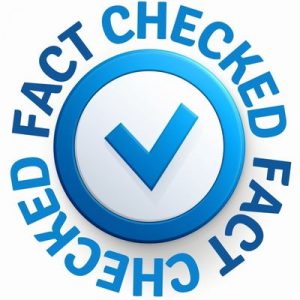
Fact Checked By Experts
Our team of internal experts diligently fact-checked this content to ensure accuracy and reliability. Find detailed information about the rigorous editorial standards we uphold for our website.

About The Author
I’m Tracy Gorman, a seasoned writer. My passion lies in crafting engaging articles that impart valuable knowledge. While I specialize in lifestyle, beauty, and health, I’m adept at tackling any subject.
